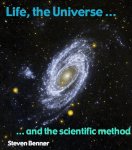As a short follow up, lots of blogs are using the word “heresy” to describe the proposal that the DNA in GFAJ-1 contains arsenic at spots instead of phosphorus. It is not heresy; it is just a hypothesis, and can be tested like any other.
Does Arsenic Really Exist in the DNA from GFAJ-1?
Arsenic DNA was back in the headlines in May [1], as Science published eight critical comments, one editorial, and a reply from the authors of a report from last December [2] that concluded that a microbe (GFAJ-1) had DNA with some of its backbone phosphorus atoms replaced by arsenic atoms. But that report had already entered the curriculum of science education, where courses on the philosophy and history of science at schools as diverse as the University of Chicago and East Side High School in Gainesville, Florida, pondered what the report of arsenic DNA showed about how science works.
The technical details will be lost on most students. However, even high school students can perceive the form of the arguments being made in this collection of pieces. They center on where "burdens of proof" Read more [...]
What is Synthetic Biology?
Many languages have words and phrases, called contranyms, that have two nearly opposite meanings. For example, a "citation" from Harvard University is good, but a "citation" from the Harvard University police is bad. If you run "fast", you are moving at great speed; if you hold "fast", you are not moving at all.
"Synthetic biology" is a contranym. In a version popular today in some engineering communities, "synthetic biology" seeks to use natural parts of biological systems (like DNA fragments or protein "biobricks") to create assemblies that do things that are not done by natural biology (such as digital computation or specialty chemical manufacture). Here, engineers hope that the performance of the molecular parts drawn from living systems can be standardized, allowing them to be mixed Read more [...]

